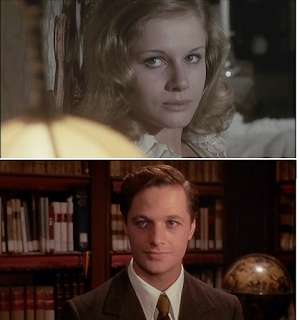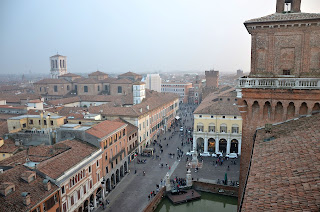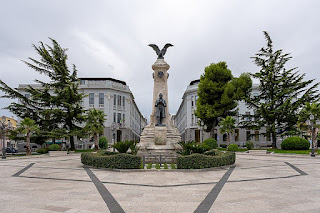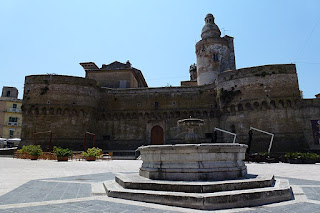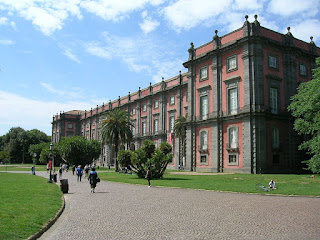NEW - Giorgio Bassani - writer and novelist
Best-known work reflected plight of wealthy Jewish Italians in 1930s
Giorgio Bassani, rated by many critics as alongside the likes of Cesare Pavese, Elsa Morante and Alberto Moravia among the great postwar Italian novelists, was born on this day in 1916 in Bologna. Bassani’s best-known work, his 1962 novel Il giardino dei finzi-contini - The Garden of the Finzi-Continis - was turned into an Oscar-winning movie by the director Vittorio De Sica. Like much of his fiction, The Garden of the Finzi-Continis is semi-autobiographical, drawing on his upbringing as a member of an upper middle-class Jewish family in Ferrara, the city in Emilia-Romagna, during the rise of Mussolini’s Fascists and the onset of World War Two. Bassani, who was the editor of a number of literary journals and a respected screenplay writer, had already achieved recognition for his work through his Cinque storie ferraresi - Five Stories of Ferrara - which won the prestigious Strega Prize in 1956. But it was The Garden of the Finzi-Continis that won him international acclaim. The novel was part of a series that expanded on the same theme in presenting a picture of the world during the author's formative years, against a background of state-promoted antisemitism. Read more…
______________________________________
Antonio Vivaldi – Baroque composer
The success and the sadness in the life of musical priest
Violinist, teacher, composer and cleric Antonio Lucio Vivaldi was born on this day in Venice in 1678. Widely recognised as one of the greatest Baroque composers, he had an enormous influence on music throughout Europe during his own lifetime. His best-known work is a series of beautiful violin concertos called The Four Seasons. Vivaldi was a prolific composer who enjoyed a lot of success when his career was at its height. As well as instrumental concertos he composed many sacred choral works and more than 40 operas. Vivaldi’s father taught him to play the violin when he was very young and he became a brilliant performer. At the age of 15 he began studying to be a priest and he was ordained at the age of 25. He soon became nicknamed ‘Il Prete Rosso’, the red priest, because of his red hair. He became master of violin at the Ospedale della Pietà, an orphanage in Venice, and composed most of his works while working there during the next 30 years. The orphaned girls received a musical education and the most talented pupils stayed on to become members of the Ospedale’s orchestra or choir. Vivaldi wrote concertos, cantatas and sacred vocal music for them to perform. Read more…
_________________________________________
Birth of the Italian Constitution
Celebrations in Turin for historic Statute
The Albertine Statute - Statuto Albertino - which later became the Constitution of the Kingdom of Italy, was approved by Charles Albert, King of Sardinia, on this day in 1848 in Turin. The Constitution was to last 100 years, until its abolition in 1948 when the Constitution of the new Italian republic came into effect. The Statute was based on the French Charter of 1830. It ensured citizens were equal before the law and gave them limited rights of assembly and the right to a free press. However, it gave voting rights to less than three per cent of the population. The Statute established the three classic branches of government: the executive, which meant the king, the legislative, divided between the royally appointed Senate and an elected Chamber of Deputies, and a judiciary, also appointed by the king. Originally, it was the king who possessed the widest powers, as he controlled foreign policy and had the prerogative of nominating and dismissing ministers of state. In practice, the Statute was gradually modified to weaken the king’s power. The ministers of state became responsible to the parliament and the office of prime minister, not provided for in the Constitution, became prominent. Read more…
________________________________________
Lucio Dalla - musician
Cantautore inspired by the great Caruso
The singer/songwriter Lucio Dalla was born on this day in 1943 in Bologna. Dalla is most famous for composing the song, Caruso, in 1986 after staying in the suite the great tenor Enrico Caruso used to occupy overlooking the sea at the Grand Hotel Excelsior Vittoria in Sorrento. Dalla started playing the clarinet when he was young and joined the Rheno Dixieland Band in Bologna along with the future film director, Pupi Avati. Avati was later to say that his film Ma quando arrivano le ragazze? was inspired by his friendship with Dalla. In the 1960s the band won first prize in the traditional jazz band category at a festival in Antibes. After hearing Dalla’s voice, his fellow cantautore - the Italian word for singer/songwriter - Gino Paoli suggested he try for a solo career as a soul singer, but his first single was a failure. Dalla had a hit with 4 Marzo 1943, originally entitled Gesù Bambino, but the title was changed to the singer’s birth date so as not to cause offence. In the 1970s Dalla started a collaboration with the Bolognese poet Roberto Roversi, who wrote the lyrics for three of his albums. Read more…






